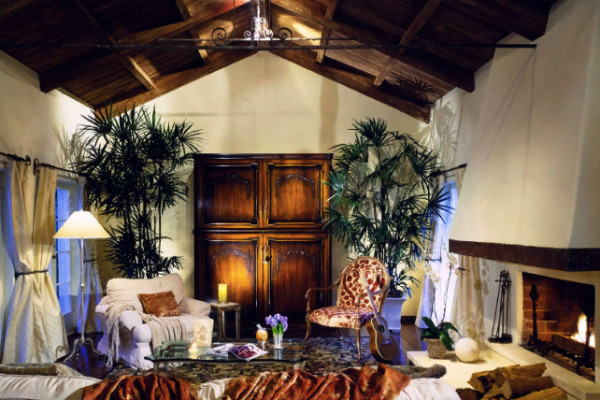Then she saw what Haley had done with his own apartment, and Ryder knew she had found an aesthetic soul mate.
Haley’s first task was to restore Ryder’s house as closely as possible to its original state. He had the orange-toned stain sandblasted from the timbered ceiling in the living room and rescued graceful wrought-iron hardware and curtain rods from the garage. He also turned the tiny patio and steeply sloping backyard into a romantic garden where Ryder loves to sit and paint.
Haley often finds inspiration in the first piece that he buys for a house. In this case, it came from a nineteenth-century Czechoslovakian chandelier with amethyst crystal drops that now graces the dining room. Similar jewel-toned accents—in the rich green velvet on the dining chairs or the ruby red of the cut velvet on a living room chair—punctuate a palette based primarily on the warm whites of walls and slipcovers. Antique, reproduction, and contemporary furnishings coexist easily under Haley’s direction, highlighted by such whimsical touches as the lace-patterned glass doors that he designed for Ryder’s dressing room.
In contrast, the actress’s New York apartment in a landmark downtown building offered Haley the chance to create a different mood entirely. “The word that came to mind was glamour,” he says. While the rooms have little architectural detail, their high ceilings and tall windows lend them an urbane and sophisticated feel.
